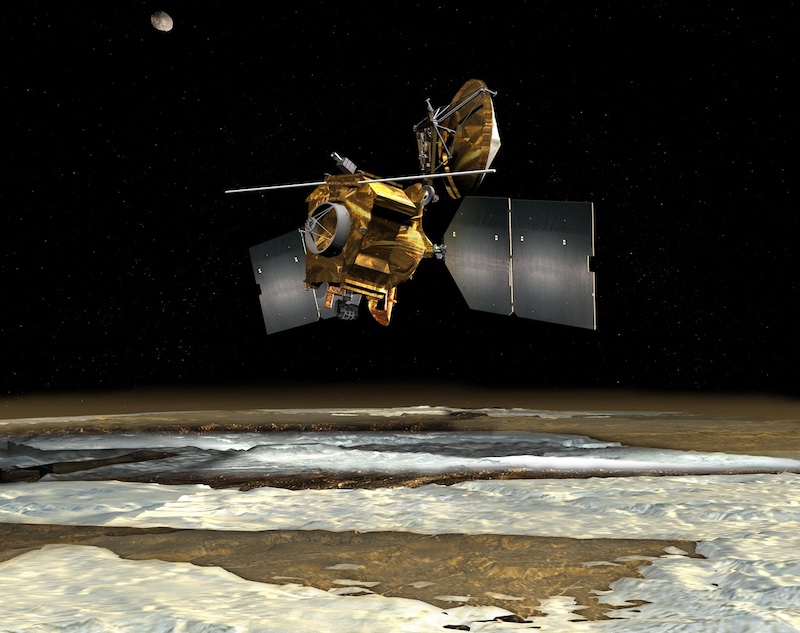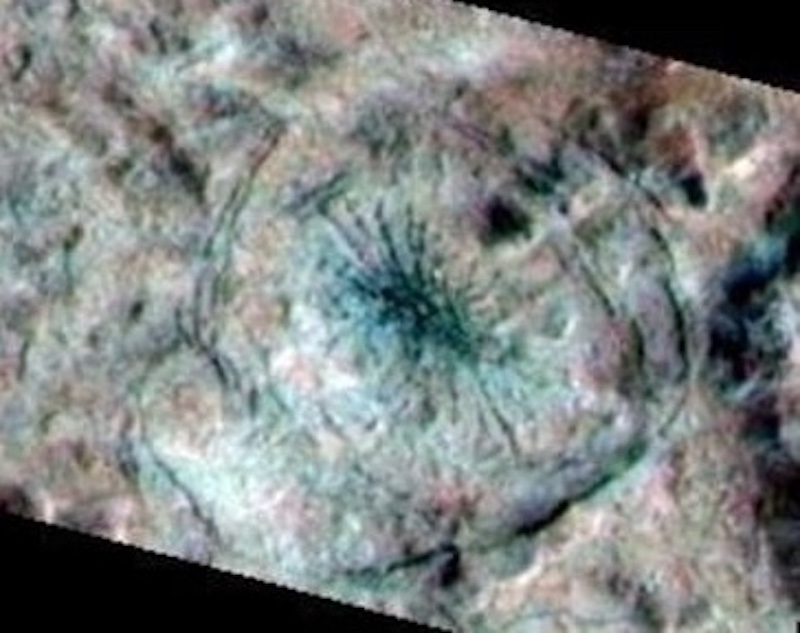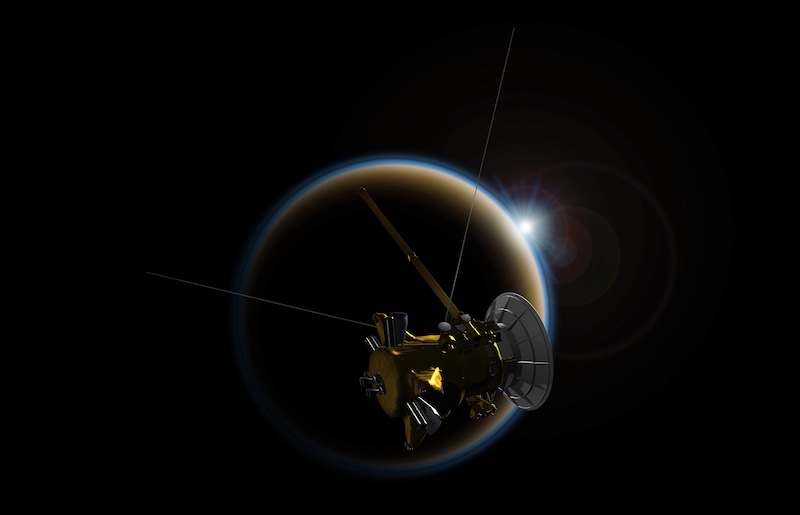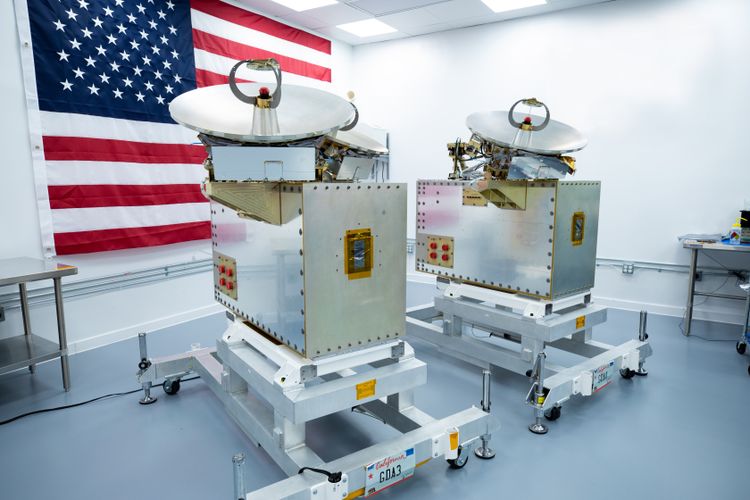Now Reading: Mars orbiter learns new tricks in search for water
-
01
Mars orbiter learns new tricks in search for water
Mars orbiter learns new tricks in search for water


- NASA’s Mars Reconnaissance Orbiter has been observing Mars since 2005. It has helped revolutionize our knowledge about the red planet.
- The spacecraft sometimes “rolls over” in its orbit by varying degrees so it can point its different instruments at the Martian surface.
- The orbiter has now rolled over by a whopping 120 degrees in its latest maneuver. This will help its onboard radar to peer deeper into the subsurface to look for water ice or even liquid water.
Mars orbiter rolls around to look for water
NASA’s Mars Reconnaissance Orbiter (MRO) has been studying the red planet since late 2005. And now, it is trying something new. Researchers from the Planetary Science Institute in Tucson, Arizona, and other institutions said on June 26, 2025, that the orbiter is performing a new roll maneuver – up to 120 degrees – so the spacecraft is essentially upside down. Why is it doing this? The rolling maneuver will help the orbiter look deeper beneath the surface with its SHARAD radar instrument for water ice or perhaps even liquid water.
MRO can peer into the shallow subsurface of Mars, up to about a mile deep. With the new rolling maneuver, it will be able to look a bit deeper and obtain clearer radar images.
The researchers published their peer-reviewed findings in The Planetary Science Journal on June 11, 2025.
Teaching an old spacecraft new tricks
In the new maneuver, MRO rolls over so it’s basically upside down. The process involved three rolls, which the spacecraft performed between 2023 and 2024. Gareth Morgan at the Planetary Science Institute is an author on the new paper and said:
Not only can you teach an old spacecraft new tricks, you can open up entirely new regions of the subsurface to explore by doing so.
Reid Thomas, MRO’s project manager at NASA’s Jet Propulsion Laboratory in Southern California, added:
We’re unique in that the entire spacecraft and its software are designed to let us roll all the time.
MRO was designed with being able to do such maneuvers in mind. It can roll up to 30 degrees in any direction. This helps it point its cameras and other instruments at features of interest, such as craters, potential landing sites for other spacecraft and more. And it uses its radar to search for subsurface ice and liquid water.
This animation depicts how Mars Reconnaissance Orbiter performs its 120-degree roll maneuvers. Video via NASA/ JPL-Caltech.
A complicated process
Rolling the spacecraft might sound simple, but it isn’t. There are multiple operating science instruments on MRO. They all have different requirements in terms of how they are pointed at Mars’ surface. When one instrument is pointed for observations, that means the other instruments are not as ideally suited for their own observations. MRO can roll to use any of the instruments but not all the instruments at the same time.
With this in mind, NASA plans each roll weeks in advance. An algorithm commands the spacecraft to roll for a particular instrument, as needed. It also commands the spacecraft’s solar arrays to rotate and track the sun and its high-gain antenna to track Earth. This enables MRO to maintain power and communications.
Sometimes, MRO has to perform even larger rolls, up to 120 degrees. This requires even more planning ahead of time.

Peering deep underground with Mars orbiter
MRO uses its Shallow Radar (SHARAD) instrument to peer deep underground on Mars, from about 1/2 mile to just over a mile (.8 to 1.6 km). It is designed to be able to search for ice, or even liquid water, and distinguish it from rock and sand. But SHARAD isn’t perfect. SHARAD uses two antennas that are mounted on the back of the orbiter. This allows the High-Resolution Imaging Science Experiment (HiRISE) camera as clear a view as possible on the front of MRO.
The only problem is that other parts of the orbiter can interfere with the radio signals that SHARAD sends to the Martian surface. This can result in less clear radar images. Also, sometimes the mission team wants to look at targets with SHARAD that are a bit too deep below the surface. Morgan said:
The SHARAD instrument was designed for the near-subsurface, and there are select regions of Mars that are just out of reach for us. There is a lot to be gained by taking a closer look at those regions.


Clearer radar images
This is where the rolling comes in. By rolling MRO up to 120 degrees, the radio waves can more easily reach the surface. This makes the signal about 10 times stronger, meaning clearer radar images and being able to see a little deeper.
The rolls have their own drawbacks, too, though. During the rolls, the communications antenna is not pointed toward Earth. And the solar arrays can’t track the sun. With this in mind, and the planning needed, the spacecraft only performs these large rolls a couple of times per year. They also require a lot of battery power. Thomas said:
The very large rolls require a special analysis to make sure we’ll have enough power in our batteries to safely do the roll.

Mars Climate Sounder
SHARAD isn’t the only instrument to benefit from MRO’s rolling capability. In addition, the Mars Climate Sounder instrument does as well. It is a radiometer that studies Mars’ atmosphere, weather and climate.
The instrument pivots on a gimbal. This way, it can obtain views of the Martian horizon, surface and space. But in 2024, it became unreliable with old age (20 years now in Mars orbit!). So now it uses MRO’s standard rolling maneuvers to compensate for that in its observations. As Mars Climate Sounder’s interim principal investigator, Armin Kleinboehl at JPL, noted:
Rolling used to restrict our science, but we’ve incorporated it into our routine planning, both for surface views and calibration.
Bottom line: A NASA Mars orbiter – Mars Reconnaissance Orbiter – is trying out a new maneuver to help it find ice and liquid water beneath Mars’ surface.
Via Planetary Science Institute
Read more: Amazing photos in Mars Reconnaissance Orbiter celebration
Read more: NASA orbiter spots Curiosity rover making tracks on Mars
The post Mars orbiter learns new tricks in search for water first appeared on EarthSky.
Stay Informed With the Latest & Most Important News
Previous Post
Next Post
-
 01From Polymerization-Enabled Folding and Assembly to Chemical Evolution: Key Processes for Emergence of Functional Polymers in the Origin of Life
01From Polymerization-Enabled Folding and Assembly to Chemical Evolution: Key Processes for Emergence of Functional Polymers in the Origin of Life -
 02Panasonic Leica Summilux DG 15mm f/1.7 ASPH review
02Panasonic Leica Summilux DG 15mm f/1.7 ASPH review -
 03Two Black Holes Observed Circling Each Other for the First Time
03Two Black Holes Observed Circling Each Other for the First Time -
 04How New NASA, India Earth Satellite NISAR Will See Earth
04How New NASA, India Earth Satellite NISAR Will See Earth -
 05And Thus Begins A New Year For Life On Earth
05And Thus Begins A New Year For Life On Earth -
 06Astronomy Activation Ambassadors: A New Era
06Astronomy Activation Ambassadors: A New Era -
07SpaceX launch surge helps set new global launch record in 2024




















